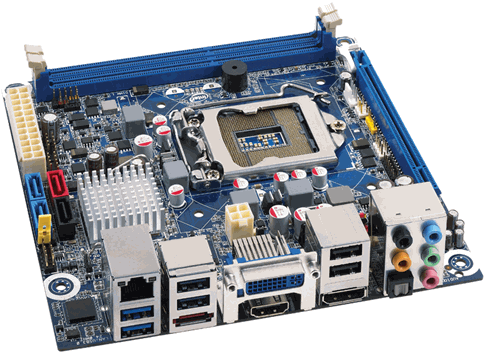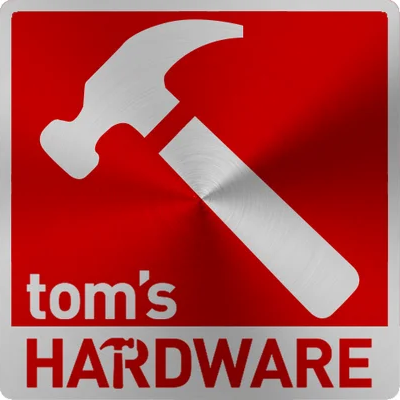Sponsored by Intel
SPONSORED BY Intel - Intel Inside, Including the Motherboard?
Industrial/Embedded Solutions
All of the work and quality control that Intel pours into its desktop boards also flows over into its embedded products. After all, in many cases, an embedded design is essentially a desktop platform optimized from being general use into single-purpose. In applications such as kiosk terminals or digital signage, size and performance can be important, but, again, reliability trumps all.
When it comes to size, microATX remains Intel’s bread and butter, but an increasing amount of the embedded industry is moving to Mini-ITX. While ITX is one of the few form factors Intel didn’t originate, Intel has taken the open standard and refined it into a new, even more targeted design. “Thin Mini-ITX” cuts the z-height of a motherboard in nearly half. Whereas a conventional 17x17 cm Mini-ITX board has an I/O shield measuring 44 mm high, thin Mini-ITX shrinks this to only 25 mm. This opens up new opportunities in areas such as in-car systems, hospital carts, media center consoles, and especially all-in-one (AIO) system designs, enabling systems as small as one cubic liter in size. In comparison, a traditional tower PC is about 30 liters.
Naturally, Intel embedded boards go through the same design and validation regimen as their desktop counterparts, but the potential for design innovation here—what people can actually do with these boards—is so vast that the company takes extra steps to help grow the market. One example is Intel’s Embedded Development Boards effort. For only $149, even first-time developers get a modular, Mini-ITX motherboard based on the Intel Atom processor and a slew of user documentation, datasheets, installation guides (emphasizing Linux), videos, and more, all aimed at helping businesses go from having an idea to a working, innovative solution built on an ultra-compact x86 platform.
Current page: Industrial/Embedded Solutions
Prev Page Quality Assurance and Validation Next Page Better SupportGet Tom's Hardware's best news and in-depth reviews, straight to your inbox.
Tom's Hardware is the leading destination for hardcore computer enthusiasts. We cover everything from processors to 3D printers, single-board computers, SSDs and high-end gaming rigs, empowering readers to make the most of the tech they love, keep up on the latest developments and buy the right gear. Our staff has more than 100 years of combined experience covering news, solving tech problems and reviewing components and systems.
-
Benihana I happen to be a grade-A idiot and now want to buy an Intel motherboard because this article presents data so well. Who else wants some free money?Reply -
trauquen someone said intel motherboard now is not designed by self, they are ODM products, not OEM products. is that truth?Reply -
Lutfij seriously, i'm beggingin to doubt my 2+ years membership at Tom's cos of this so called "article"Reply
I thought Tom's was engaged in bringing us groundbreaking reviews - not things to read when we need to go to sleep.
Face it intel - manufacturers are able to reverse engineer your boards and come out with tonnes of goodies with a slight bump in prices! Period! -
Lutfij Reply9515571 said:What kind of dumbass falls for these bullshit advertorials?
people who aren't enlisted on pc/tech forums and swindlers :P with this rubbish report even intel can fool its CEO into buying their crap :D -
CoolnQuiet Ahem, Mini-ITX was developed by VIA in 2002. Not by Intel! Who writes this nonsense?Reply -
My first and last intel board was purchased with my i3 core (gen1). Pure garbage after 6 months. Slow POSTs became non boots unless I started the machine and hit the reset button. Stick it sideways intel.Reply
-
Well, it's good that it says SPONSORED on the first page, as this could just as well have been written by Intel...Reply

